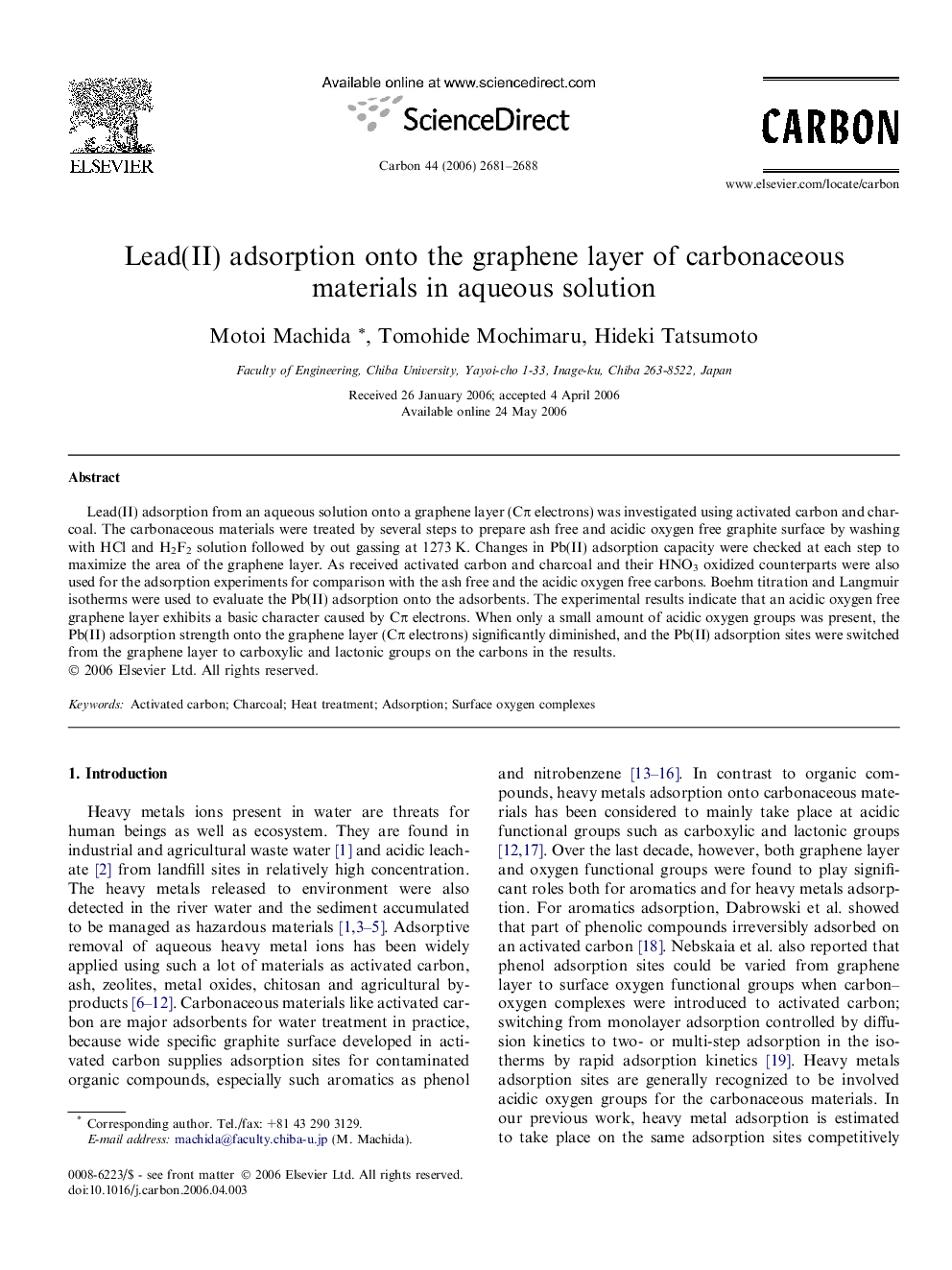| Article ID | Journal | Published Year | Pages | File Type |
|---|---|---|---|---|
| 1419673 | Carbon | 2006 | 8 Pages |
Lead(II) adsorption from an aqueous solution onto a graphene layer (Cπ electrons) was investigated using activated carbon and charcoal. The carbonaceous materials were treated by several steps to prepare ash free and acidic oxygen free graphite surface by washing with HCl and H2F2 solution followed by out gassing at 1273 K. Changes in Pb(II) adsorption capacity were checked at each step to maximize the area of the graphene layer. As received activated carbon and charcoal and their HNO3 oxidized counterparts were also used for the adsorption experiments for comparison with the ash free and the acidic oxygen free carbons. Boehm titration and Langmuir isotherms were used to evaluate the Pb(II) adsorption onto the adsorbents. The experimental results indicate that an acidic oxygen free graphene layer exhibits a basic character caused by Cπ electrons. When only a small amount of acidic oxygen groups was present, the Pb(II) adsorption strength onto the graphene layer (Cπ electrons) significantly diminished, and the Pb(II) adsorption sites were switched from the graphene layer to carboxylic and lactonic groups on the carbons in the results.
